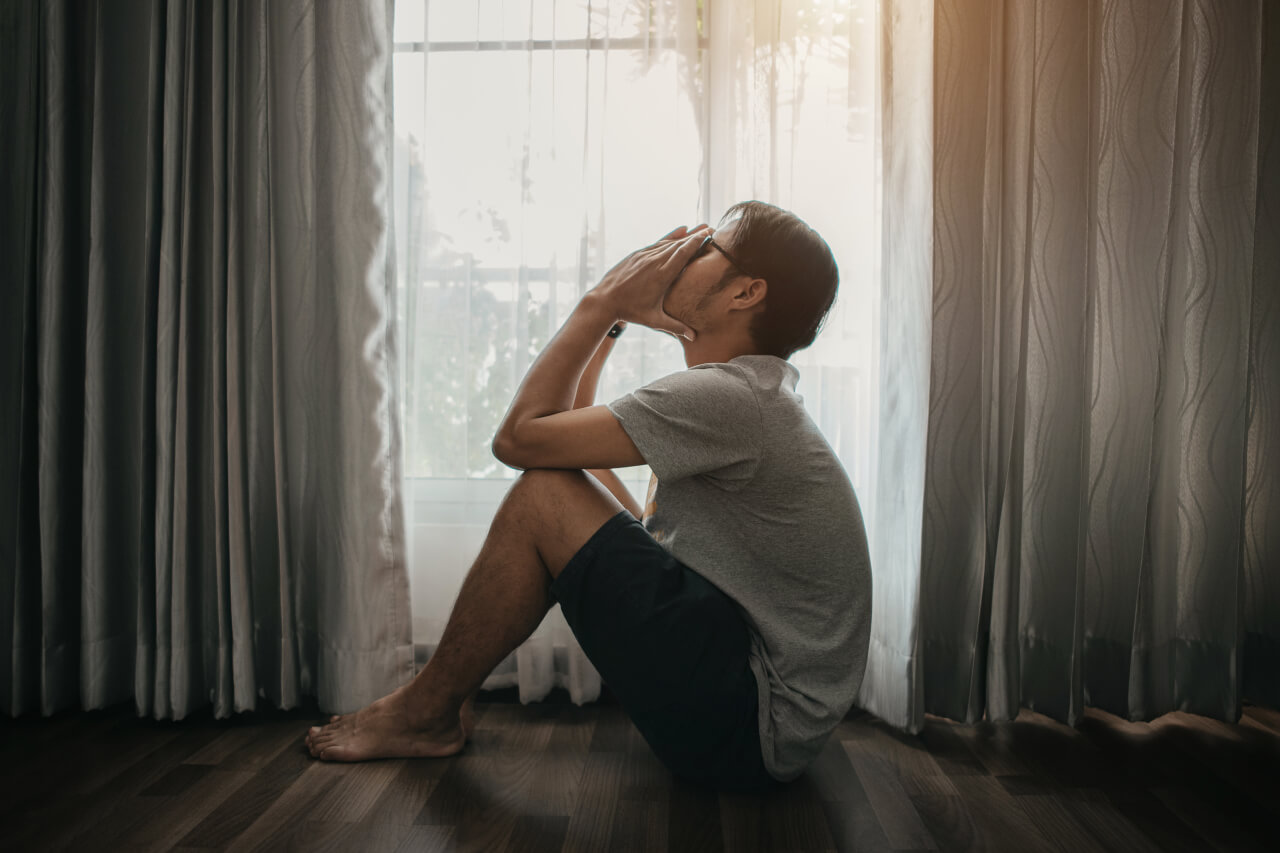Anxiety is a natural human response to stress and potential threats.
It is a normal part of life, and everyone experiences it to some degree.
However, when anxiety becomes excessive, uncontrollable, or disproportionate to the situation, it can develop into an anxiety disorder.
Anxiety disorders are a group of mental health conditions characterized by excessive and persistent worry, fear, or anxiety that can significantly interfere with daily life.
These disorders go beyond the normal stress and anxiety that people experience in response to challenging situations.
Types of Anxiety Disorders
There are several types of anxiety disorders, each with its own set of symptoms and characteristics.
Here’s an overview of some common types:
Generalized Anxiety Disorder (GAD)
Generalized Anxiety Disorder (GAD) is characterized by excessive, uncontrollable worry and anxiety about a variety of everyday concerns.
Individuals with GAD often find it challenging to control their worry, and the anxiety is often out of proportion to the actual situation.
Symptoms include Persistent and excessive worry, restlessness, fatigue, difficulty concentrating, muscle tension, and irritability.
GAD can interfere with daily functioning and quality of life.
Panic Disorder
Panic disorder involves recurrent, unexpected panic attacks, which are sudden periods of intense fear or discomfort.
Panic attacks may occur without an apparent trigger.
Symptoms include Shortness of breath, chest pain, trembling, sweating, dizziness, and a sense of impending doom.
Individuals with panic disorder often fear future panic attacks and may avoid situations or places where attacks have occurred.
Social Anxiety Disorder (SAD)
SAD, also known as social phobia, is characterized by an intense fear of social situations and a fear of being negatively judged or evaluated by others.
Symptoms include Anxiety about social interactions, avoidance of social situations, physical symptoms (blushing, sweating, trembling) in social situations.
SAD can significantly impact a person’s ability to engage in social activities or pursue personal and professional goals.
Specific Phobias
Specific phobias involve an intense, irrational fear of a specific object or situation. Common phobias include fear of heights, flying, animals, or medical procedures.
Symptoms include Immediate anxiety or panic when exposed to the phobic stimulus, avoidance of the stimulus.
Individuals with specific phobias may go to great lengths to avoid the feared object or situation, leading to disruptions in daily life.
Obsessive-Compulsive Disorder (OCD)
OCD is characterized by persistent, intrusive thoughts (obsessions) and repetitive behaviors or mental acts (compulsions) performed to alleviate the anxiety associated with the obsessions.
Symptoms include Intrusive thoughts, compulsive behaviors (e.g., excessive handwashing, checking, counting).
OCD can significantly interfere with daily functioning and may cause distress.
Post-Traumatic Stress Disorder (PTSD)
Post-Traumatic Stress Disorder (PTSD) can develop after exposure to a traumatic event. Symptoms may include intrusive memories, nightmares, flashbacks, hypervigilance, and emotional numbness.
Symptoms include Re-experiencing the trauma, avoidance of reminders, negative changes in mood and cognition.
PTSD can affect various aspects of a person’s life, including relationships, work, and overall well-being.
Agoraphobia
Agoraphobia involves an intense fear of situations or places where escape might be difficult or embarrassing, leading to avoidance of those situations.
Symptoms include fear of being in crowded places, using public transportation, or being outside the home alone.
Agoraphobia can result in significant social and occupational impairment, as individuals may become housebound.
Each type of anxiety disorder has its unique features, and individuals may experience a combination of these disorders.
The struggle
Living with an anxiety disorder can present various challenges and struggles that can impact different aspects of a person’s life.
These struggles may vary in intensity and can affect individuals in unique ways. Some common challenges include:
Impaired Daily Functioning
Anxiety disorders can interfere with a person’s ability to carry out daily activities such as work, school, or social interactions.
The persistent worry and fear can make it challenging to concentrate and perform tasks effectively.
Impact on Relationships
Anxiety disorders can strain relationships with family, friends, and romantic partners.
The avoidance behaviors common in many anxiety disorders may lead to social isolation, making it difficult to maintain connections with others.
Physical Health Effects
Chronic anxiety can contribute to physical health issues such as muscle tension, headaches, digestive problems, and fatigue.
The constant state of arousal associated with anxiety can take a toll on the body over time.
Sleep Disturbances
Many individuals with anxiety disorders experience difficulties with sleep, including insomnia or disrupted sleep patterns.
This lack of quality sleep can further exacerbate anxiety symptoms and negatively impact overall well-being.
Negative Impact on Self-Esteem
The persistent self-doubt, fear of judgment, and worry associated with anxiety disorders can erode self-esteem and self-confidence.
Individuals may question their abilities and worth, contributing to a negative self-perception.
Avoidance Behaviors
People with anxiety disorders often engage in avoidance behaviors to steer clear of situations or stimuli that trigger anxiety.
While these behaviors provide temporary relief, they can reinforce the anxiety and limit personal and professional growth.
Financial Impact
Anxiety disorders can lead to difficulties in maintaining employment or pursuing educational opportunities.
The impact on daily functioning and productivity can result in financial strain.
Physical Symptoms
Anxiety can manifest physically, leading to symptoms such as headaches, muscle tension, stomachaches, and cardiovascular issues.
These symptoms can be distressing and contribute to a cycle of heightened anxiety.
Impact on Academic Performance
For individuals in school or university, anxiety disorders can significantly affect academic performance.
Concentration difficulties, test anxiety, and avoidance of academic challenges can impede learning and achievement.
Feelings of Isolation
The fear of judgment and the desire to avoid triggering situations may lead to social withdrawal and isolation.
This sense of loneliness can further contribute to feelings of anxiety and depression.
3 Reasons Why You Should Speak Up
Opening up and talking about an anxiety disorder can be a crucial step in managing the condition and improving overall well-being.
Here are seven reasons why someone should consider discussing their anxiety disorder:
Reducing Stigma
Speaking up about anxiety disorders plays a crucial role in reducing stigma by challenging misconceptions, fostering understanding, and promoting empathy. Here’s how:
- Humanizing the Experience:
Sharing personal experiences with anxiety helps humanize the condition.
It transforms abstract notions of mental health issues into real, relatable stories, making it easier for others to empathize and understand that anxiety affects individuals, not just statistics.
- Dispelling Myths and Misconceptions:
Open dialogue provides an opportunity to dispel myths and misconceptions surrounding anxiety disorders.
By sharing accurate information about the causes, symptoms, and treatment options, individuals can contribute to a more informed and educated public discourse.
- Challenging Stereotypes:
People with anxiety disorders may face stereotypes and misconceptions.
Speaking openly challenges these stereotypes, highlighting the diversity of experiences and emphasizing that anxiety does not define a person or dictate their capabilities.
- Demonstrating Courage and Strength:
Publicly discussing anxiety requires courage and strength.
By sharing their stories, individuals demonstrate resilience, perseverance, and the ability to manage and overcome challenges.
This challenges the notion that mental health struggles are a sign of weakness.
- Encouraging Open Conversations:
When individuals speak openly about their anxiety, it encourages others to do the same.
This normalization of conversations about mental health contributes to a culture of openness, making it more acceptable for individuals to seek help and share their experiences without fear of judgment.
- Creating a Supportive Community:
Open discussions about anxiety contribute to the creation of supportive communities.
When people feel comfortable talking about mental health, it fosters an environment where individuals can seek support without fear of discrimination or isolation.
- Promoting Empathy and Compassion:
Personal stories about anxiety evoke empathy and compassion.
When others can relate to the challenges someone has faced, it builds understanding and compassion, reducing judgment and negative attitudes toward individuals with anxiety disorders.
- Educating the Public:
Speaking up provides an opportunity to educate the public about mental health.
Increased awareness and understanding contribute to a more compassionate and inclusive society, where individuals with anxiety disorders are not unfairly stigmatized or discriminated against.
- Encouraging Policy Changes:
Public discussions about mental health can contribute to changes in policies and practices that may perpetuate stigma.
Increased awareness can lead to more empathetic and supportive policies in workplaces, schools, and communities.
Reducing stigma surrounding anxiety disorders is a collective effort that involves challenging attitudes, changing perceptions, and fostering an environment where individuals feel accepted and understood.
Speaking up plays a vital role in this process by creating a platform for open, honest conversations about mental health.
Enhancing Relationships
Speaking up about anxiety disorders can have several positive effects on relationships, enhancing understanding, empathy, and support. Here’s how:
- Fostering Open Communication:
Discussing anxiety promotes open communication within relationships.
It encourages individuals to express their feelings, concerns, and experiences, creating a foundation for understanding and connection.
- Building Trust:
Sharing personal struggles fosters trust within relationships.
It demonstrates vulnerability and honesty, which are essential components of building strong and supportive connections with others.
- Providing Insight into Behavior:
Speaking about anxiety can help explain certain behaviors or reactions that might be puzzling to others.
Understanding the impact of anxiety allows loved ones to interpret actions in context and respond with empathy rather than confusion or frustration.
- Empowering Support:
Open communication about anxiety allows loved ones to offer more targeted and effective support.
When individuals understand the specific challenges, someone faces, they can provide encouragement and assistance in ways that align with the person’s needs.
- Reducing Misunderstandings:
Anxiety symptoms can sometimes be misunderstood or misinterpreted.
Discussing anxiety helps clarify the nature of these symptoms, reducing misunderstandings and preventing potential conflicts within relationships.
- Enhancing Empathy:
Sharing personal experiences with anxiety encourages empathy.
Loved ones gain insight into the emotional and psychological challenges faced by individuals with anxiety disorders, fostering a deeper understanding of their perspectives.
- Creating a Supportive Environment:
Open dialogue about anxiety helps create a supportive environment within relationships. Knowing that one’s struggles are acknowledged and accepted promotes emotional well-being and a sense of safety.
- Encouraging Patience:
Understanding the nature of anxiety encourages patience within relationships.
Loved ones may recognize that certain behaviors are not intentional but are manifestations of anxiety, leading to a more compassionate and patient approach.
- Strengthening Resilience:
Facing anxiety together can strengthen the resilience of relationships.
Couples or family members who navigate challenges related to mental health together often develop coping strategies and communication skills that contribute to the overall resilience of the relationship.
- Building a Shared Narrative:
Discussing anxiety allows individuals and their loved ones to build a shared narrative.
This shared understanding can be a foundation for facing challenges as a team and working collaboratively to support each other.
It’s important to note that effective communication is key in these discussions.
Expressing one’s needs, feelings, and experiences in a clear and constructive manner can contribute to positive outcomes and strengthen relationships.
Professional support, such as couples or family therapy, can also be beneficial in navigating the challenges associated with anxiety disorders within relationships.
Empowering Others
Speaking up about anxiety disorders can empower others in various ways, fostering a culture of understanding, support, and resilience.
Here’s how discussing anxiety can have an empowering impact on others:
- Normalizing the Conversation:
By openly discussing anxiety, individuals contribute to normalizing conversations around mental health. This normalization reduces the stigma associated with anxiety disorders, making it more acceptable for others to talk about their own experiences.
- Encouraging Others to Seek Help:
When individuals share their stories of seeking help and finding effective coping strategies, it can inspire others to take similar steps.
It reinforces the idea that seeking professional support is a positive and proactive approach to managing mental health.
- Providing Role Models:
Individuals who speak openly about their experiences with anxiety can serve as role models for others facing similar challenges.
Knowing that someone has successfully navigated through anxiety can inspire hope and provide a positive example.
- Sharing Coping Strategies:
Discussing anxiety allows individuals to share the coping strategies that have worked for them. This information can empower others by providing practical tools and techniques to manage anxiety and improve overall well-being.
- Building a Supportive Community:
Open conversations about anxiety contribute to the creation of a supportive community.
Individuals sharing their experiences create a network where others feel encouraged to share their own stories and seek support without fear of judgment.
- Challenging Societal Expectations:
Speaking up challenges societal expectations and norms surrounding mental health.
It encourages individuals to embrace their vulnerabilities, challenge stereotypes, and redefine what it means to live with and overcome anxiety.
- Promoting Self-Acceptance:
When individuals share their experiences with anxiety, it contributes to promoting self-acceptance.
Others may recognize that it’s okay to acknowledge and embrace their own struggles, fostering a positive attitude toward mental health.
- Breaking Down Barriers:
Open discussions about anxiety help break down barriers between individuals who experience mental health challenges and those who may not fully understand them.
This breakdown of barriers contributes to a more inclusive and compassionate society.
- Encouraging Empathy:
Personal stories evoke empathy in others.
Hearing about someone’s journey with anxiety can help others better understand the emotional and psychological impact of mental health struggles, fostering empathy and compassion.
- Creating a Sense of Belonging:
By sharing their experiences, individuals contribute to creating a sense of belonging for others who may be dealing with similar challenges.
It reinforces the idea that individuals with anxiety are not alone and that there is a community of support available.
Empowering others through open discussions about anxiety involves creating an environment where people feel validated, supported, and encouraged to take steps toward their mental well-being.
Sharing personal experiences can be a powerful catalyst for positive change within communities and societies.
Conclusion
Anxiety disorders represent a diverse and challenging category of mental health conditions that impact individuals in various ways.
Understanding the different types of anxiety disorders, from generalized anxiety to specific phobias and post-traumatic stress disorder, is essential for both affected individuals and those around them.
The struggles of living with an anxiety disorder are multifaceted, affecting daily functioning, relationships, and overall well-being.
However, speaking up about anxiety disorders emerges as a powerful antidote to the challenges posed by these conditions.
When individuals share their experiences with anxiety, they contribute significantly to reducing the stigma associated with mental health.
Open dialogue dispels myths, challenges stereotypes, and humanizes the experiences of those grappling with anxiety disorders.
The act of speaking up also plays a pivotal role in fostering empathy, understanding, and a supportive community.
By addressing misconceptions and promoting accurate information, individuals contribute to a cultural shift that views mental health struggles through a lens of compassion rather than judgment.
Furthermore, discussing anxiety disorders has a profound impact on relationships.
Open communication fosters trust, enhances empathy, and creates an environment where loved ones can provide targeted support.
It empowers individuals to express their needs and challenges, reducing misunderstandings and strengthening the resilience of relationships.
Additionally, sharing one’s struggles with anxiety not only promotes self-acceptance but also encourages others to seek help, fostering an atmosphere where mental health is prioritized and supported.
In the broader context, speaking up about anxiety disorders empowers others by normalizing conversations around mental health.
It encourages individuals to seek help, provides role models for resilience, and shares practical coping strategies.
By challenging societal expectations and breaking down barriers, those who openly discuss anxiety contribute to creating a more inclusive and compassionate society—one that recognizes the strength and courage it takes to confront and manage mental health challenges.
Ultimately, discussing anxiety disorders is an act of empowerment that goes beyond individual narratives.
It contributes to a collective effort to destigmatize mental health, build supportive communities, and inspire hope for those who may be navigating their own journeys with anxiety.
Through these open conversations, we can work toward a future where mental health is embraced, understood, and prioritized for the well-being of individuals and society as a whole.
FAQs
What are the common types of anxiety disorders?
Common types include generalized anxiety disorder (GAD), panic disorder, social anxiety disorder (SAD), specific phobias, obsessive-compulsive disorder (OCD), post-traumatic stress disorder (PTSD), and agoraphobia.
What are the main symptoms of anxiety disorders?
Symptoms include excessive worry, restlessness, fatigue, difficulty concentrating, muscle tension, irritability, panic attacks, avoidance behaviors, and intrusive thoughts.
How can anxiety disorders impact daily life?
Anxiety disorders can interfere with daily functioning, relationships, work, and overall well-being, affecting various aspects of life.
What are the benefits of speaking up about anxiety disorders?
Speaking up reduces stigma, fosters understanding, and encourages empathy. It builds supportive relationships, promotes self-acceptance, and empowers others to seek help.





